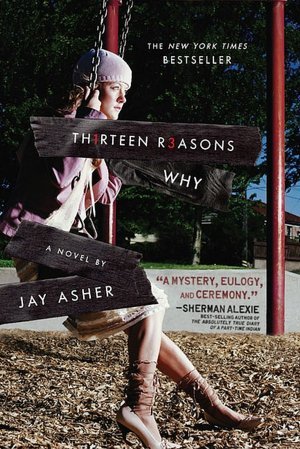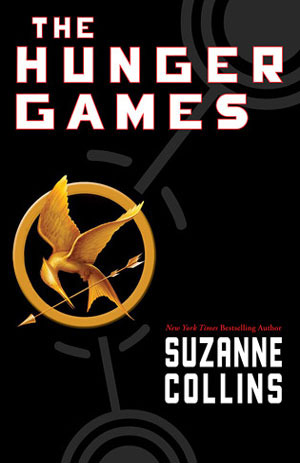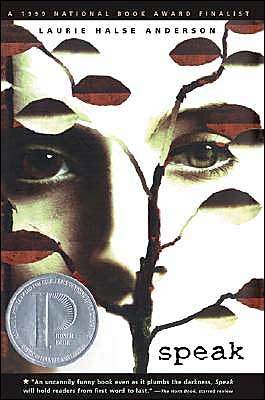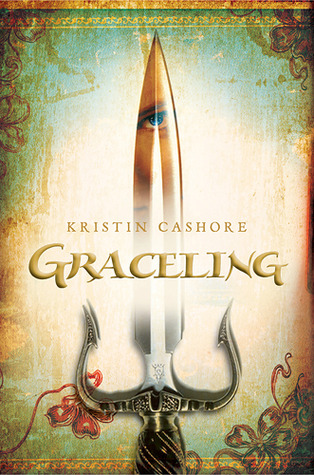*There may be some spoilers in this post for the following books*








So far in my Females in YA series, I’ve discussed my own experiences as a female growing up and the roles females play in my own writing. Since then I’ve come across two more articles about this topic you all might find interesting: That’s Not Very Feminist of You, Bella: Feminism in YA by Chelsea Condren (thanks to Ann Herrick for directing me to this one) and Screw Writing Strong Women by J. Anderson Coats.
For part 3, let’s open things up beyond my experiences and writing and take a look at what has been going on in other YA books. So what are females in YA doing these days? For examples I’m sticking to blockbuster selling books (and ones I’ve actually read) because that seems to be what most teens are reading in large numbers (and it would be hard to intelligently talk about books I haven’t read).
So we’ve got a girl who committed suicide and posthumously leaves tapes for those responsible for her death (Jay Asher’s Thirteen Reason Why); a girl whose sole reason for existence seems to be becoming a vampire so she can spend the rest of her life with the vampire boy she’s been pining after (Stephanie Meyer’s Twilight); a girl who is forced to fight to the death in a reality TV show (Suzanne Collins’ The Hunger Games); a girl with terminal cancer who meets a boy, who also has cancer, and falls in love (John Green’s The Fault in Our Stars); a book stealing girl whose family is hiding a Jewish boy during WWII (Markus Zusak’s The Book Thief); a girl who is afraid to speak the truth about having been raped at a party (Laurie Halse Anderson’s Speak); a girl who has the Grace, or magical talent, of killing (Kristin Cashore’s Graceling); and a group of four girls, with different personality and physical traits, who share a pair of jeans on their first summer away from each other (Ann Brashares’ The Sisterhood of the Traveling Pants).
I know that’s a lot of examples, but I really wanted to demonstrate the breadth of what is being covered in YA. There are lots of heavy issues, including suicide, rape, cancer, death, killing, losing one’s virginity, and war. And the books above above seem to be a good sampling of the different genres, with paranormal, contemporary, dystopian, historical, and fantasy represented. There are strong, physically and/or mentally, girls; broken girls; sensitive girls; codependent ones; and numerous other adjectives that could be used to describe these females characters.
Boys do play a prominent role in pretty much all these stories, but romance doesn’t necessarily dominate them all. And in several boys play a very negative role in the narrative. (This list of books I’ve mentioned is certainly not exhaustive, but I found it unwieldy enough with eight so I was reticent to include anymore.)
So it seems (bringing the conversation back to my original post) that the reality of boys not being everything to teen girls is reflected in YA, though boys do factor into most girls’ lives and the popular stories written about them. Also, I believe different types of females are represented in these stories, which I think is a good thing.
One thing I found surprising when compiling this list was how heavy so many of these stories were. I can only speculate, but I imagine teen girls read about these heavy topics so widely because the stories evoke strong emotional responses (at least all these books did so in me).
Before I started this post, I imagined going into more specific details about the female characters in these books, but I think the post has grown longer than I anticipated. Maybe I’ll continue this discussion further and look at some of these characters in depth…I’ll have to think on it (feeling a bit mentally fatigued right now).
I’d love to hear your thoughts and keep this conversation going in the comments. What YA females have resonated with you? What do you think makes these (and other stories you’ve read) so popular with teens? Do you think a variety of females are represented in current YA?




















I’ve read several, though not all, of these books and agree that they show a variety of personalities. I think that’s good so the readers can find a girl they relate to.
Hi, Beverly! I agree that it’s important for girls to have a variety of personalities to read about so they can find ones to relate to. Something that occurs to me as I read your comment is that it’s nice to have people who aren’t like you to read about as well.
I’ve read most of these and identified best with those characters who were motivated for some goal (Graceling, The Book Thief), though I think a lot of readers also like the escape aspect of some of these books. The contrast from their own lives draws them in (I know it does for me). I’ve read several articles about Bella, especially, being something of a non-character that allows girls to fall into her role easily (even if its a role I’d hope my own daughters would avoid!). Lots of food for thought here!
Glad the post has you thinking, Meradeth. I find myself nodding in agreement while reading your comment. I definitely enjoyed the escapism aspect of Twilight, though I agree Bella isn’t necessary a great role model for teens. Still, I don’t think a character should necessarily be a role model…it would be boring if all the female characters in YA were!
I’ve read some of the books and I think readers can identify with female main characters and can also have fits over a female main character’s choices. Either way, they learn something about themselves and being female and how they might want to direct their lives (even if they don’t immediately realize that).
Very well said, Ann! I often “have fits” over the choices characters make. 🙂 And great point about teen readers internalizing the lessons about being female and how they want to direct their lives.
You have some stellar book featured there, Katie. But as you said, most of these examples have protagonists dealing with the weightiest of issues.
Hi, Mirka! I really wasn’t trying to find books with weighty issues, but it seems most of the top-selling ones I’ve read do have heavy issues. Wonder what that says about my reading habits…
The fact that there are many varied characters and themes is the reason I think it is so important for kids to read! It is impossible for parents, teachers, or the religious leaders in a young person’s life to prepare a child for everything that might happen to them. But books can at minimum expose them to the many, many possibilities.
Yes, very good point, Kai!
I think it’s great to have a wide variety of female MCs in books because there are a wide variety of females in the world. 🙂
Right on, Erin! 🙂
(To use some really old slang) :p
I love “old” slang! Bring it! 😉
Very interesting post. I’ve read most of those and you are right, many of them have heavy topics. But I think that’s why I love YA. There’s so much variety and each author has their own flavor to bring to the table.
Thanks, Christina! The variety of YA is one of my favorite things about reading it as well. I find much of the adult reading I do to be predictable, but in YA I’m constantly surprised. I also think there’s more room to play with how a story is told as well.